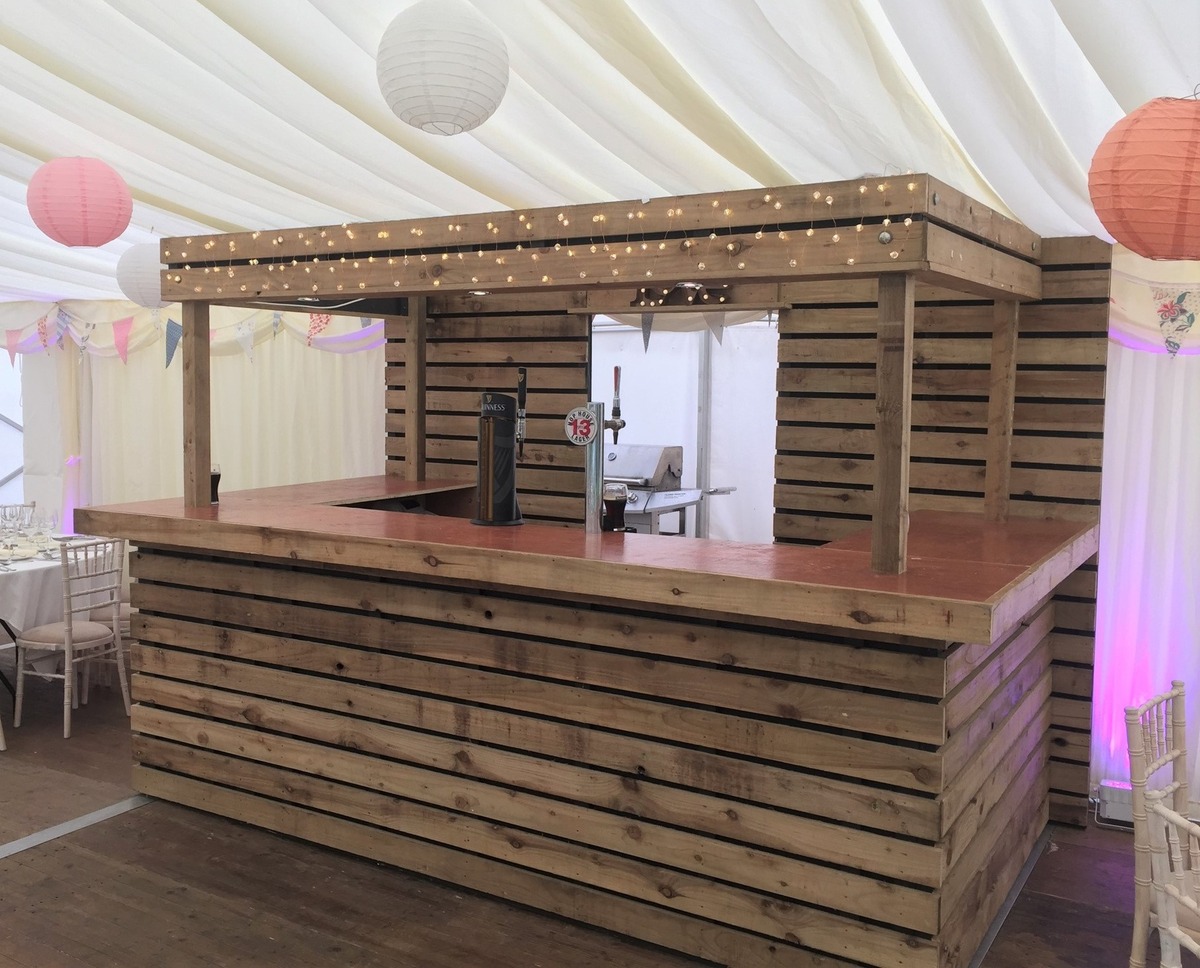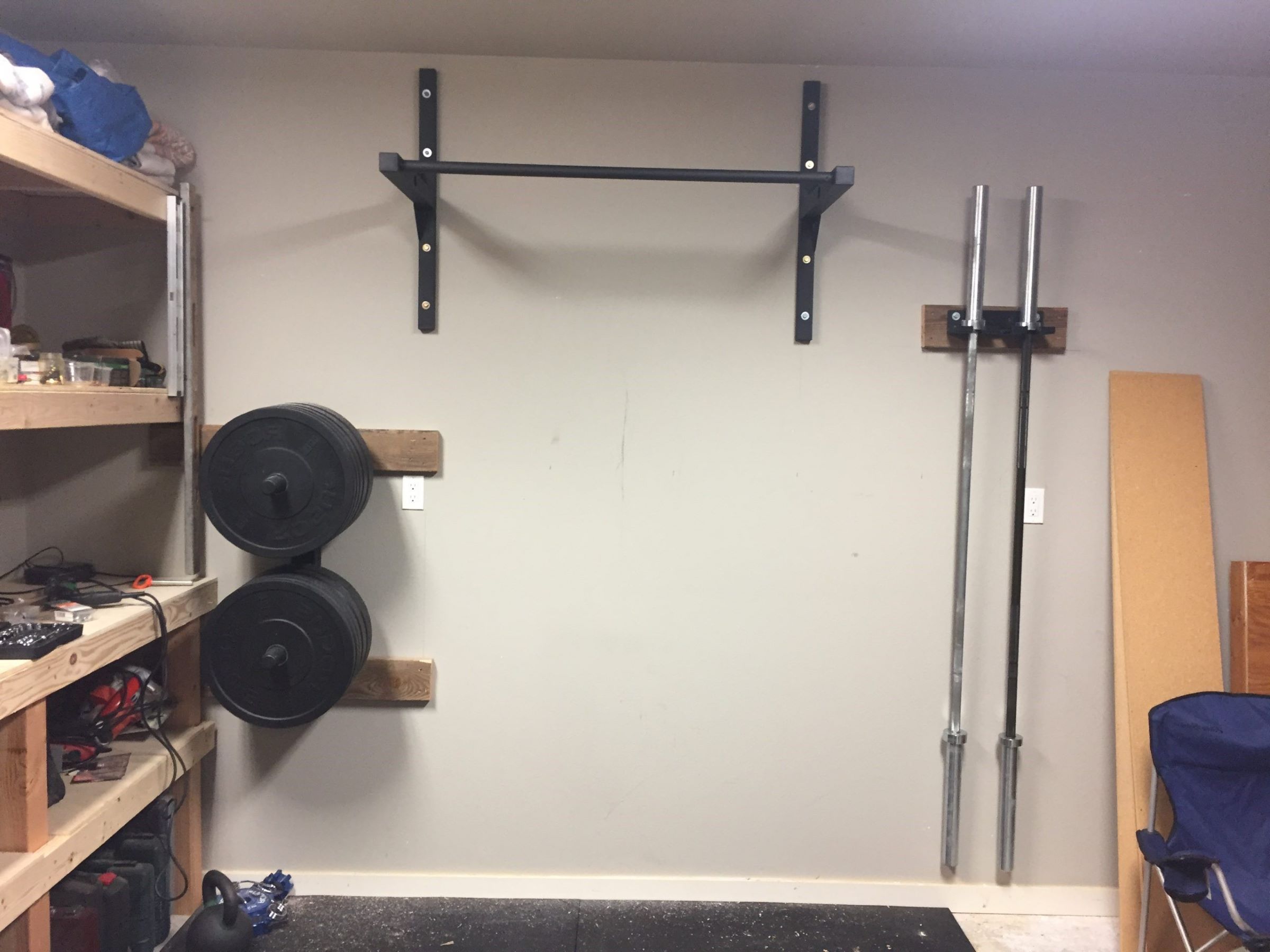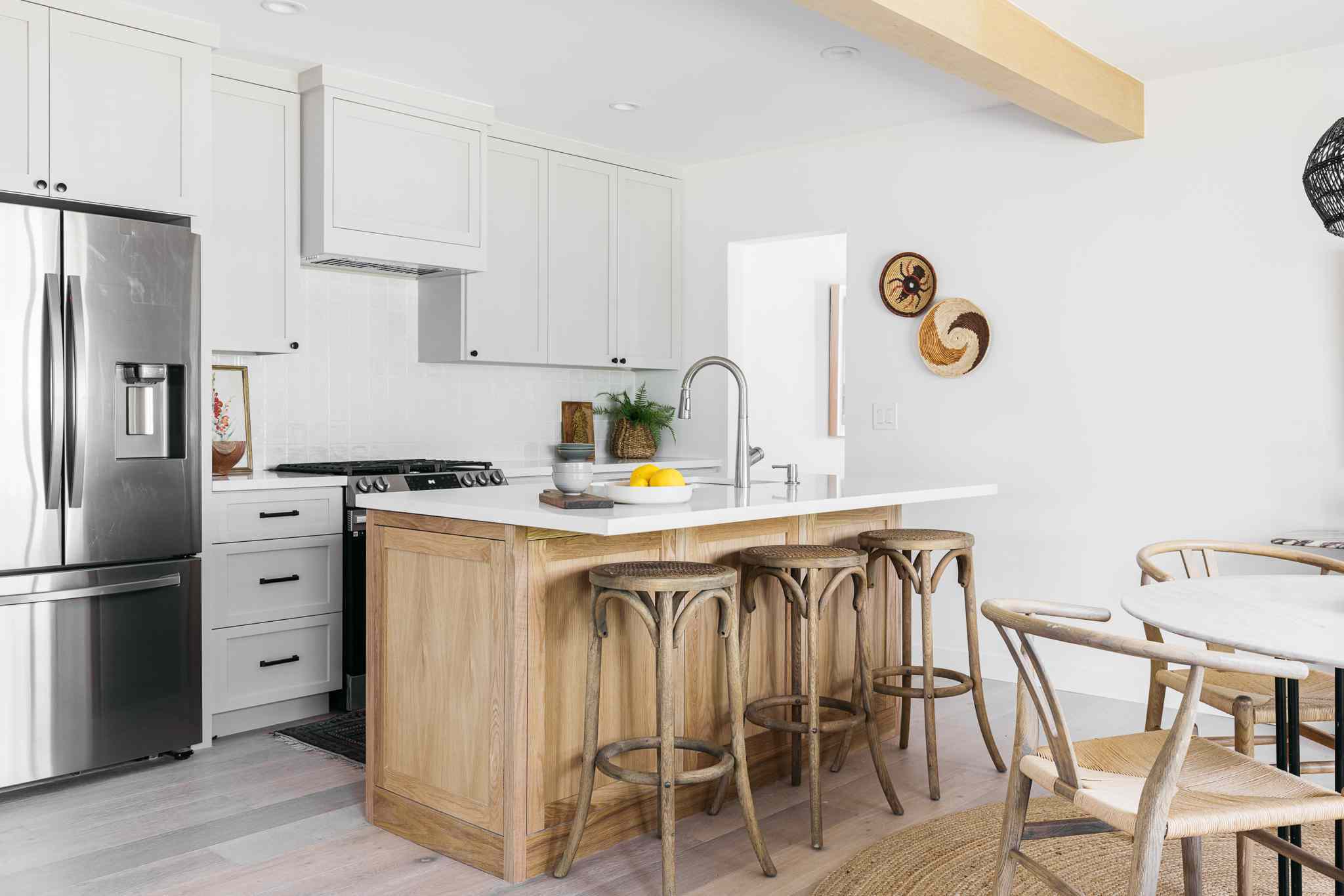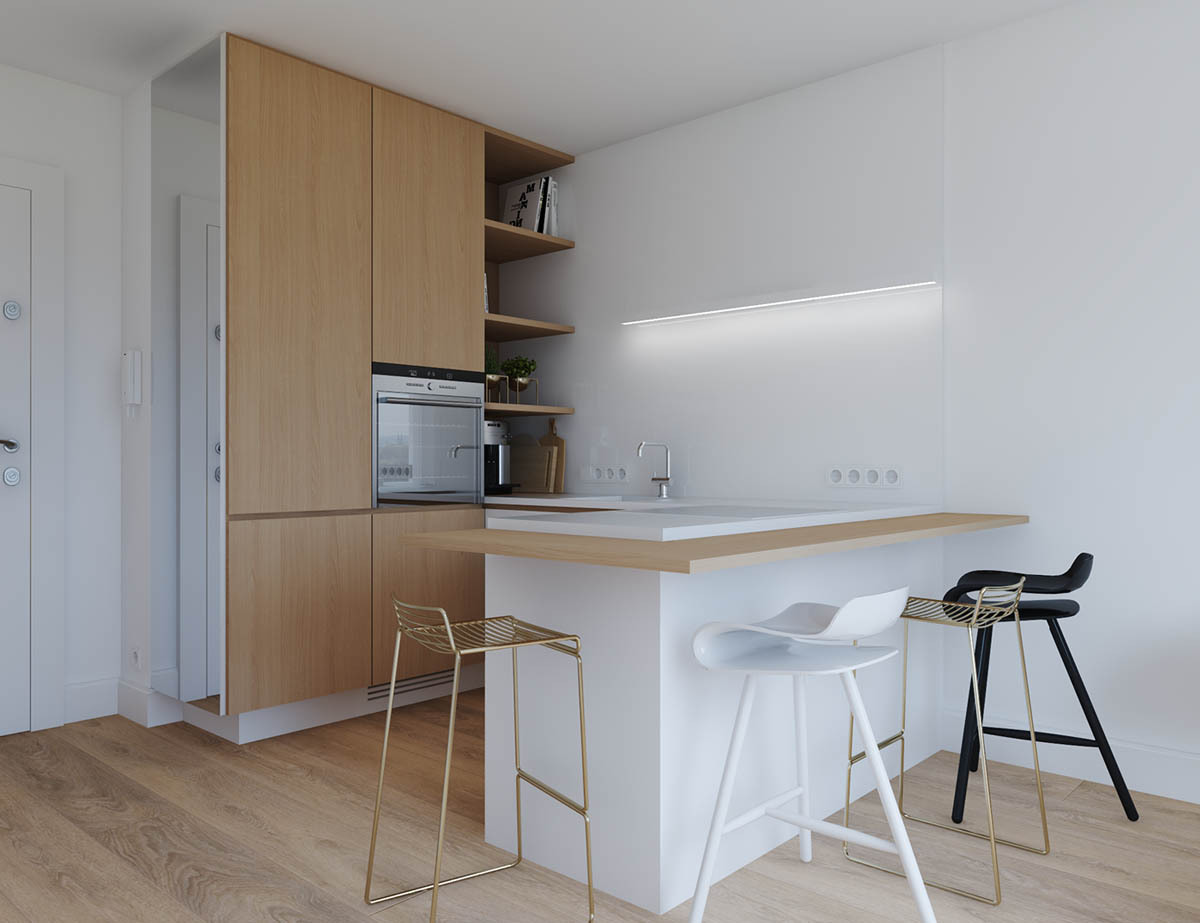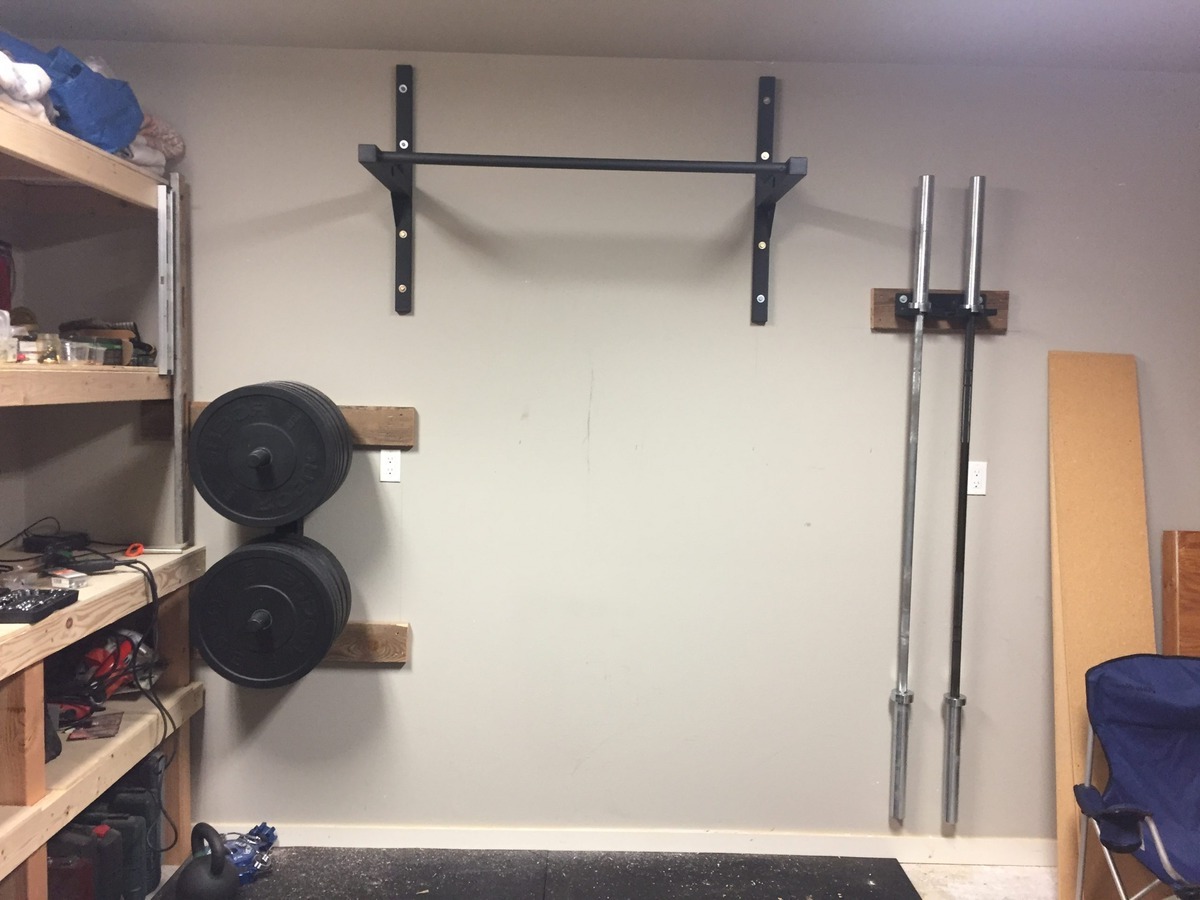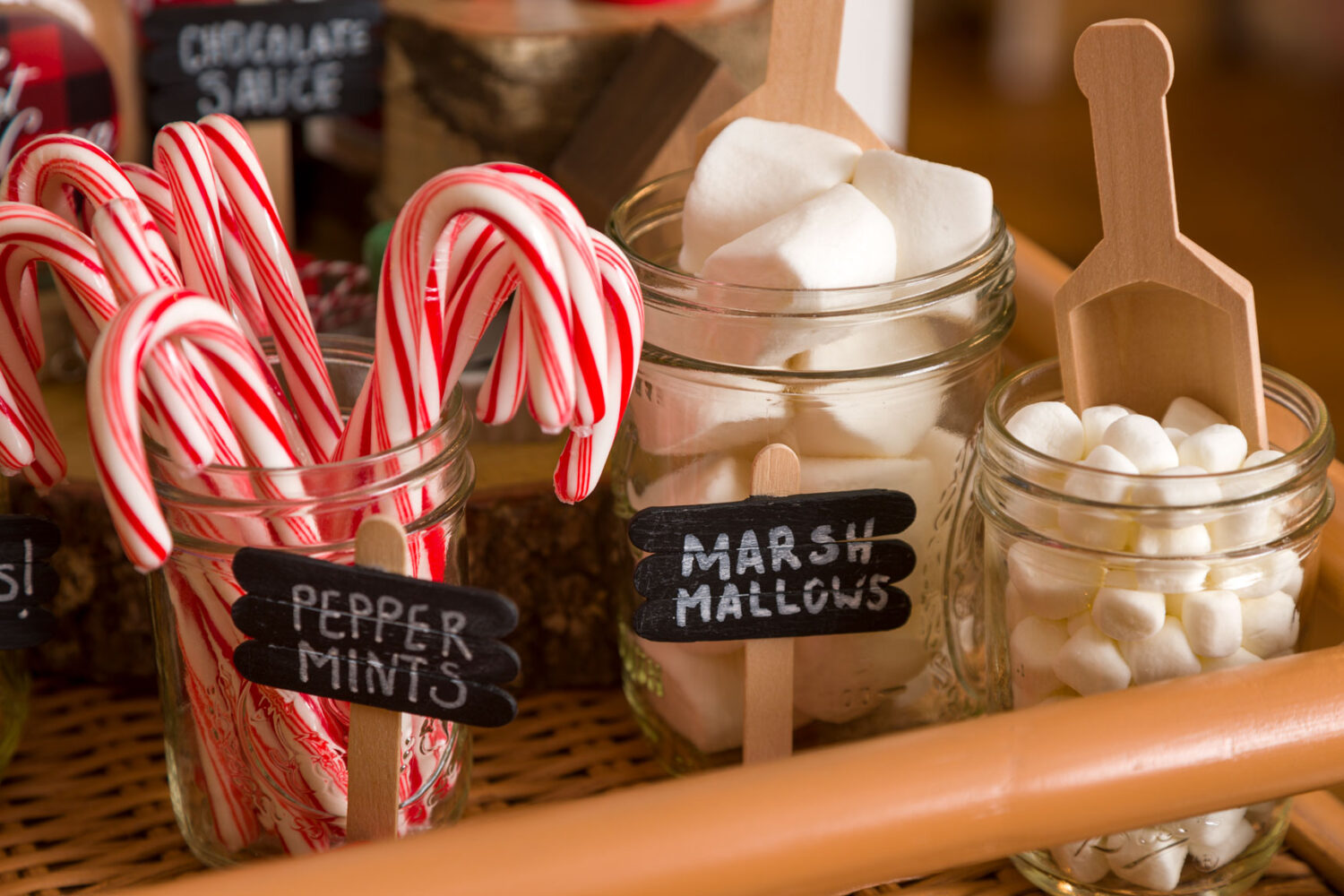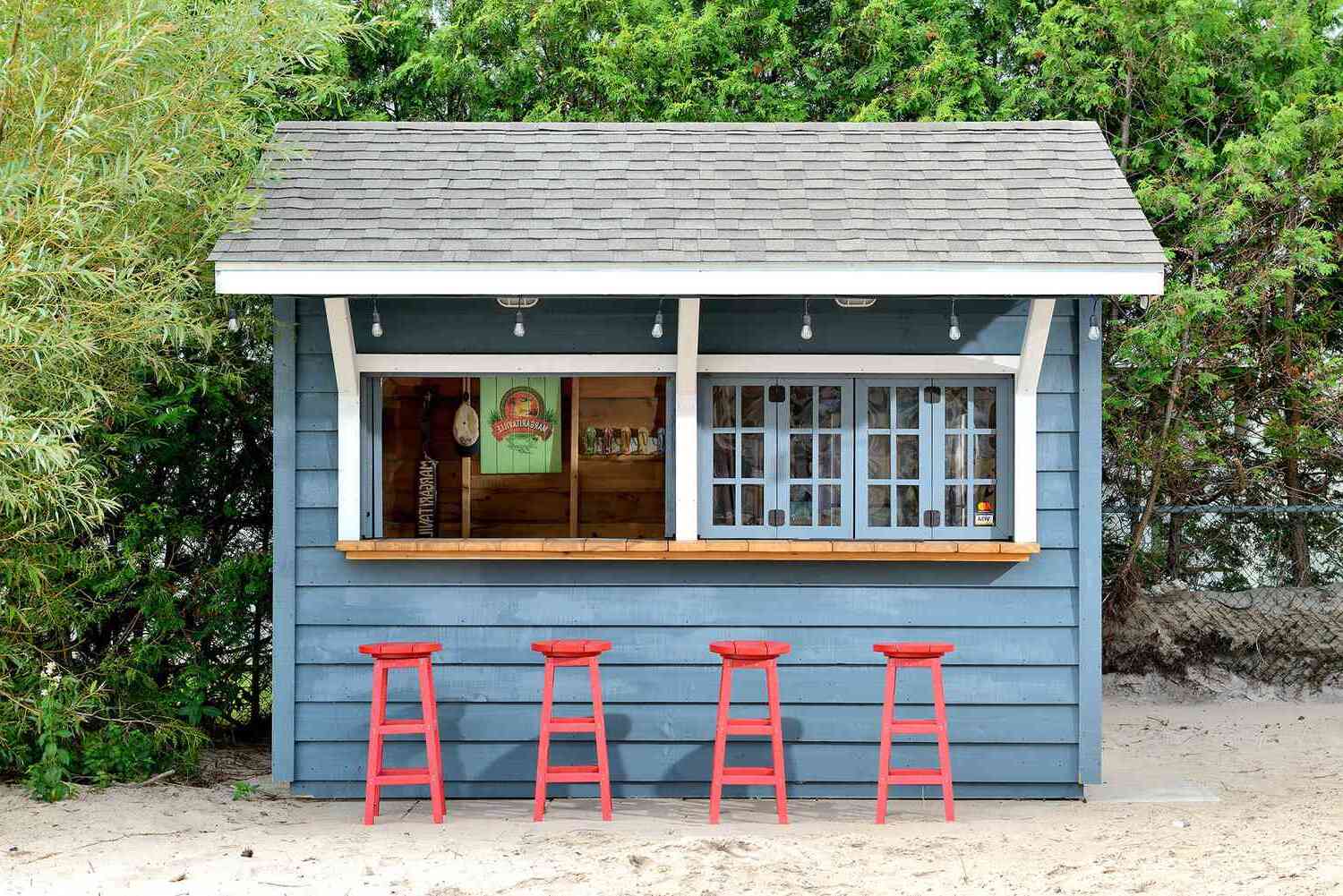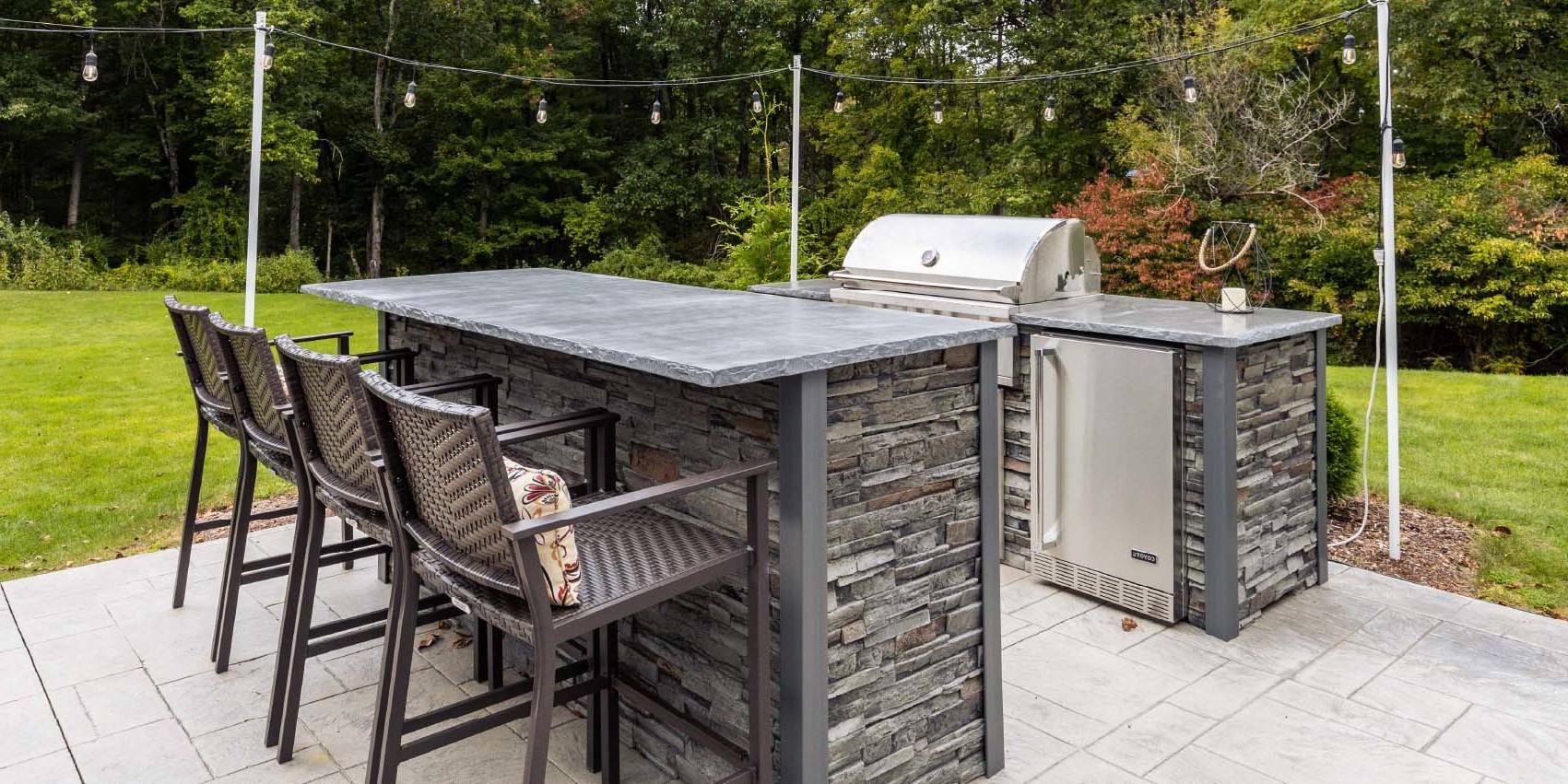Home>Create & Decorate>DIY & Crafts>How To Build A Bar
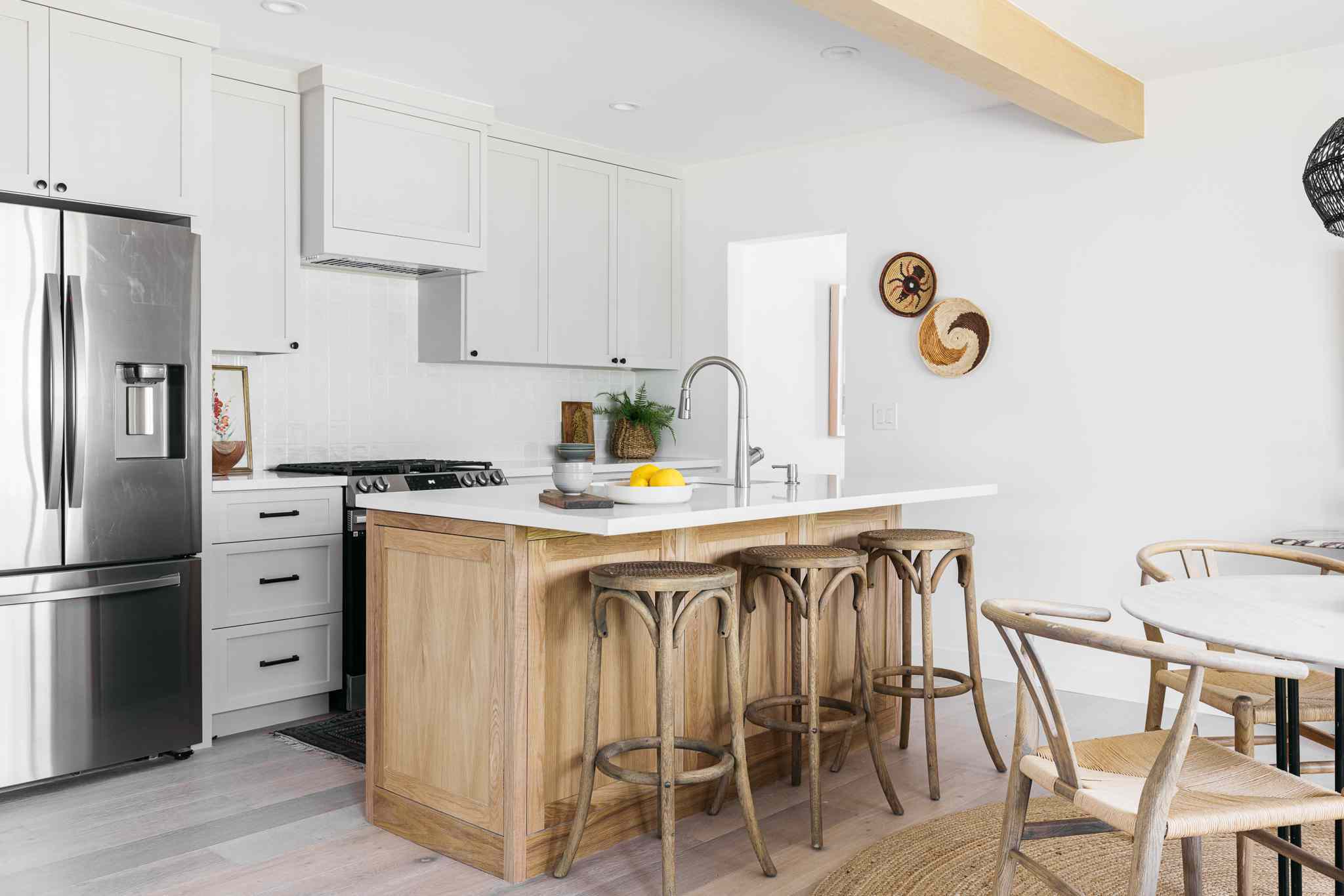

DIY & Crafts
How To Build A Bar
Published: February 22, 2024

Content Creator specializing in woodworking and interior transformations. Caegan's guides motivate readers to undertake their own projects, while his custom furniture adds a personal touch.
Learn how to build a bar with these DIY & Crafts tips and ideas. Create your own custom bar for your home with step-by-step instructions.
(Many of the links in this article redirect to a specific reviewed product. Your purchase of these products through affiliate links helps to generate commission for Twigandthistle.com, at no extra cost. Learn more)
Introduction
Are you ready to elevate your entertaining game and create a space where friends and family can gather and unwind? Building your own bar is an exciting and rewarding project that allows you to customize every aspect to suit your personal style and needs. Whether you're a seasoned DIY enthusiast or a first-time builder, this comprehensive guide will walk you through the essential steps to bring your dream bar to life.
From selecting the perfect location within your home to obtaining the necessary permits and licenses, this article will cover everything you need to know to embark on this fulfilling endeavor. We'll delve into the intricacies of designing the layout, installing plumbing and electrical components, and adding the finishing touches that will transform your space into a welcoming and functional bar area.
So, roll up your sleeves and get ready to unleash your creativity as we embark on this journey to build a bar that will be the envy of all your guests. Let's dive in and explore the exciting world of DIY bar construction!
Read more: DIY Basement Bar Build Guide
Planning and Designing Your Bar
Before picking up any tools or materials, it's crucial to invest time in meticulous planning and thoughtful design. This phase sets the foundation for a successful bar construction project and ensures that the end result aligns with your vision. Here's a detailed breakdown of the essential steps involved in planning and designing your bar:
-
Define Your Vision: Start by envisioning the type of bar you want to create. Consider the overall style, size, and functionality that best suits your space and lifestyle. Are you aiming for a sleek and modern bar with a minimalist design, or do you prefer a rustic, cozy ambiance? Understanding your preferences will guide the entire planning process.
-
Space Assessment: Evaluate the available space where you intend to build the bar. Take precise measurements and consider any architectural or structural limitations that may impact the design. Assess the flow of foot traffic and ensure that the bar's location allows for easy access and seamless integration with the surrounding area.
-
Layout and Functionality: Determine the layout of the bar, including the placement of essential components such as the bar counter, storage cabinets, and seating area. Focus on creating a functional and ergonomic design that facilitates efficient bartending and accommodates social interactions. Consider incorporating features like a sink, refrigerator, and ample counter space for preparing and serving drinks.
-
Material Selection: Choose the materials that will bring your bar to life. From the bar counter and shelving to the flooring and backsplash, each element contributes to the overall aesthetic and durability of the bar. Whether you opt for natural wood, sleek granite, or industrial-inspired metal, select materials that complement your design concept and align with your maintenance preferences.
-
Lighting and Ambiance: Lighting plays a pivotal role in setting the mood and ambiance of your bar. Explore various lighting options, such as pendant lights, LED strips, or recessed lighting, to create a welcoming and inviting atmosphere. Additionally, consider integrating dimmer switches to adjust the lighting intensity based on the occasion.
-
Personalization and Décor: Infuse your personality into the design by incorporating personalized touches and thematic décor. Whether it's displaying a collection of vintage cocktail glasses or adorning the walls with custom signage, these details add character and charm to your bar.
By investing time in the planning and design phase, you'll lay a solid groundwork for the construction and ensure that the end result reflects your unique style and preferences. With a clear vision and a well-thought-out plan in place, you're ready to move on to the next phase of bringing your dream bar to fruition.
Choosing the Right Location
Selecting the optimal location for your home bar is a pivotal decision that significantly influences its functionality and overall appeal. The right location sets the stage for seamless entertaining and ensures that your bar becomes a central hub for social gatherings. Here's a detailed exploration of the key considerations when choosing the perfect spot for your bar:
Proximity and Accessibility
The ideal location for your bar should be easily accessible and seamlessly integrated into the flow of your home. Consider areas that facilitate effortless interaction with guests, such as the living room, game room, or entertainment area. Proximity to the kitchen is also advantageous, allowing for convenient access to essential supplies and ingredients while preparing and serving drinks.
Space Utilization
Evaluate the available space within your home and identify areas that can accommodate the bar without causing congestion or disrupting the existing layout. Look for underutilized spaces, such as alcoves, unused corners, or an empty wall, that can be transformed into a dedicated bar area. Maximizing space utilization ensures that the bar becomes a functional and harmonious addition to your home.
Social Dynamics
Take into account the social dynamics of your household and the typical size of gatherings you host. If you frequently entertain large groups, consider a location that offers ample room for guests to gather around the bar comfortably. Alternatively, if intimate gatherings are more common, a cozy and secluded bar area may be more suitable for fostering engaging conversations and creating a relaxed ambiance.
Aesthetic Integration
Harmonizing the bar's design with the surrounding décor and architectural elements is essential for creating a cohesive and visually appealing space. Choose a location that allows for seamless integration of the bar's aesthetic, whether it's aligning with the existing color scheme, complementing the furniture, or capitalizing on architectural features to enhance the overall appeal.
Practical Considerations
Factor in practical considerations such as access to plumbing and electrical connections, as well as the proximity to existing water lines and power sources if you plan to incorporate a sink, refrigerator, or other essential amenities. Additionally, assess the impact of natural lighting and ventilation on the chosen location to ensure a comfortable and inviting atmosphere.
By carefully evaluating these considerations, you can identify the perfect location for your home bar, setting the stage for a captivating and functional space that seamlessly integrates into your home environment. With the right location secured, you're one step closer to bringing your dream bar to life.
Obtaining Permits and Licenses
Before diving into the physical construction of your home bar, it's crucial to navigate the regulatory landscape and ensure compliance with local building codes, zoning regulations, and licensing requirements. Obtaining the necessary permits and licenses not only legitimizes your project but also safeguards against potential legal issues down the road. Here's a comprehensive overview of the essential steps involved in obtaining permits and licenses for your home bar construction:
-
Research Local Regulations: Begin by researching the specific regulations and requirements governing home bar construction in your locality. Contact your local building department or visit their website to familiarize yourself with the applicable codes, zoning restrictions, and permit prerequisites. Understanding these regulations is fundamental to navigating the approval process smoothly.
-
Building Permits: In most jurisdictions, constructing a home bar typically requires a building permit. This permit serves as official approval from the local authorities, affirming that your project complies with safety and structural standards. The application process may entail submitting detailed construction plans, paying a permit fee, and scheduling inspections at various stages of the build.
-
Electrical and Plumbing Permits: If your home bar involves electrical wiring, lighting installations, or plumbing work, separate permits for these specific components may be necessary. These permits ensure that the electrical and plumbing systems meet safety standards and are installed by licensed professionals, where required.
-
Zoning and Land Use Clearances: Verify whether your property's zoning designation permits the construction of a home bar. Certain zoning regulations dictate the allowable land use, building setbacks, and maximum occupancy, which can impact the feasibility of your project. Obtaining zoning clearances may involve submitting site plans and demonstrating compliance with setback requirements.
-
Health and Liquor Licenses: If your home bar will include the serving of alcoholic beverages, it's essential to explore the licensing requirements related to alcohol service and sales. This may involve obtaining a liquor license from the appropriate regulatory agency, adhering to age restrictions, and complying with health and safety standards for food and beverage service, if applicable.
-
Professional Consultation: Given the complexity of permit and licensing procedures, consulting with a licensed contractor, architect, or legal professional experienced in navigating these processes can provide invaluable guidance. Their expertise can streamline the application process and ensure that all regulatory obligations are met.
By proactively addressing the permit and licensing requirements, you can embark on your home bar construction with confidence, knowing that your project is compliant with local regulations and poised for a smooth and successful realization. Taking the time to secure the necessary approvals sets the stage for a rewarding and stress-free construction journey.
Read more: How to Build a DIY Bar Table
Building the Bar Structure
The construction of the bar structure marks a pivotal phase in bringing your vision to life. Whether you opt for a freestanding bar or a built-in design, meticulous attention to detail and precision are paramount in achieving a sturdy and visually appealing structure. Here's a comprehensive guide to navigating the process of building the bar structure:
1. Gather Essential Tools and Materials
Before commencing the construction, gather the necessary tools and materials, including a level, measuring tape, circular saw, drill, screws, wood glue, and the selected building materials. The choice of materials, such as hardwood, plywood, or reclaimed wood, should align with the envisioned aesthetic and durability of the bar.
2. Constructing the Frame
Begin by constructing the frame of the bar, ensuring that it is level and securely anchored to the floor, especially for freestanding bars. Use precise measurements and sturdy lumber to create a robust frame that forms the foundation of the bar structure. Consider incorporating additional supports for overhangs or extensions to accommodate seating.
3. Installing the Bar Counter
Once the frame is in place, proceed to install the bar counter, which serves as the focal point of the structure. Carefully cut and assemble the countertop using the selected material, ensuring a seamless and polished finish. Secure the countertop to the frame, allowing for any necessary overhang for bar stools or seating arrangements.
Read more: How to Build a DIY Coffee Bar
4. Adding Shelving and Storage
Integrate shelving and storage components into the bar design to accommodate glassware, bottles, and bar accessories. Custom-built shelves or pre-fabricated storage units can be installed to optimize space and organization, enhancing the functionality of the bar while contributing to its visual appeal.
5. Finishing Touches
Apply a finish to the bar structure that complements the overall design, whether it's a stain to accentuate the natural wood grain or a coat of paint to achieve a specific color scheme. Additionally, consider adding decorative elements such as trim, molding, or paneling to elevate the aesthetic appeal of the bar.
6. Incorporating Foot Rails and Bar Accents
For added comfort and style, consider incorporating foot rails along the base of the bar to provide a convenient footrest for guests. Furthermore, explore the addition of decorative accents such as brass railings, personalized signage, or thematic embellishments to infuse character into the bar design.
By meticulously executing each step of the bar structure construction, you'll lay the groundwork for a visually striking and functional centerpiece within your home. The attention to detail and craftsmanship invested in this phase sets the stage for the subsequent installation of plumbing and electrical components, bringing you one step closer to realizing your dream home bar.
Installing Plumbing and Electrical
The installation of plumbing and electrical components is a critical phase in the construction of a home bar, as it facilitates the seamless operation of essential amenities and enhances the overall functionality of the space. From incorporating a sink for convenient cleanup to integrating lighting and electrical outlets for ambiance and convenience, meticulous attention to detail is paramount in this phase. Here's a comprehensive guide to navigating the process of installing plumbing and electrical elements in your home bar:
1. Plumbing Considerations
When incorporating a sink into your home bar, careful planning and precise execution are essential. Begin by determining the optimal location for the sink, considering factors such as proximity to the main water supply and drainage lines. If the bar is situated in close proximity to an existing kitchen or bathroom, leveraging the nearby plumbing connections can streamline the installation process. However, if the location necessitates new plumbing lines, consulting a licensed plumber to assess the feasibility and ensure compliance with building codes is advisable. The installation process typically involves cutting into the existing water supply and drainage lines, securing the sink in place, and connecting the fixtures to the plumbing system.
2. Electrical Wiring and Lighting
Effective lighting is pivotal in creating an inviting ambiance within your home bar. Begin by strategically positioning lighting fixtures to illuminate the bar area, accentuate the décor, and ensure adequate visibility for bartending activities. Consider incorporating a combination of overhead lighting, task lighting for the bar counter, and accent lighting to highlight decorative elements. When installing electrical outlets, prioritize convenience and accessibility, ensuring that they are strategically positioned to accommodate appliances, charging stations, and entertainment systems. Adhering to electrical codes and safety standards is paramount, and consulting a licensed electrician to handle the wiring and installation of electrical components is highly recommended.
3. Ventilation and Climate Control
Incorporating proper ventilation and climate control measures within the bar area contributes to a comfortable and inviting environment. If the bar is situated in a confined space or lacks natural ventilation, consider installing a ventilation system to mitigate odors and maintain air quality. Additionally, climate control measures, such as a small-scale air conditioning unit or a ceiling fan, can enhance comfort during gatherings and ensure a pleasant experience for guests.
By meticulously addressing the plumbing and electrical requirements of your home bar, you'll create a space that seamlessly integrates essential amenities, fosters a welcoming ambiance, and enhances the overall functionality of the area. With these foundational elements in place, you're well-equipped to proceed to the next phase of adding the finishing touches that will transform your home bar into a captivating and functional space.
Adding Finishing Touches
As you approach the final stages of constructing your home bar, adding the finishing touches is where the magic truly happens. This phase allows you to infuse personality, style, and functionality into the space, elevating it from a construction project to a captivating and inviting bar area. Here's a detailed exploration of the essential finishing touches that will transform your home bar into a captivating and functional space:
Read more: How to Build DIY Window Security Bars
1. Aesthetic Accents and Décor
Introduce decorative elements that reflect your personal style and enhance the ambiance of the bar. Consider incorporating thematic décor, such as vintage signage, neon lights, or custom artwork, to infuse character and charm. Additionally, adorn the walls with tasteful artwork, mirrors, or floating shelves to display your collection of spirits and glassware, adding visual interest and depth to the space.
2. Bar Seating and Furnishings
Selecting the right bar stools or seating options is crucial in creating a comfortable and inviting atmosphere. Choose seating that complements the overall design aesthetic and provides ergonomic support for guests. Whether opting for classic bar stools, upholstered chairs, or custom-built seating, prioritize comfort and style to encourage social interactions and prolonged enjoyment.
3. Personalized Touches
Infuse the bar with personalized touches that reflect your passions and interests. Displaying memorabilia, framed photographs, or a curated selection of cocktail recipe books adds a layer of intimacy and authenticity to the space. Additionally, consider incorporating personalized coasters, glassware, or custom bar accessories that bear your unique stamp, creating a sense of ownership and pride in the bar area.
4. Ambient Enhancements
Enhance the ambiance of the bar with ambient enhancements such as a sound system for music, a small television for entertainment, or a projection screen for movie nights. Thoughtfully integrating these elements contributes to a multifunctional space that can cater to various forms of entertainment, making the bar a versatile and dynamic hub within your home.
Read more: How To Make A Bar Top
5. Maintenance and Organization
Implement organizational solutions to maintain a tidy and functional bar area. Incorporate storage solutions for bar tools, mixers, and garnishes, ensuring easy access and efficient bartending. Additionally, designate a dedicated cleaning kit and waste disposal system to streamline maintenance and upkeep, preserving the pristine appearance of the bar.
By meticulously attending to these finishing touches, you'll breathe life and character into your home bar, creating a space that reflects your individuality and sets the stage for memorable gatherings and cherished moments with friends and family. With the completion of these essential details, your home bar will stand as a testament to your creativity and craftsmanship, ready to serve as the focal point of social gatherings and celebrations for years to come.
Stocking Your Bar
Stocking your bar is a pivotal step that transforms your newly constructed space into a fully functional and inviting area for entertaining and enjoyment. Carefully curating a selection of spirits, mixers, and essential bar tools equips you to craft a diverse array of cocktails and cater to the preferences of your guests. Here's a comprehensive guide to stocking your bar with the essential elements that will elevate your bartending prowess and delight your visitors.
1. Spirits Selection
Begin by assembling a well-rounded collection of spirits that form the foundation of your bar. Include versatile options such as vodka, gin, rum, tequila, and whiskey, encompassing both popular brands and artisanal offerings. Additionally, consider incorporating flavored liqueurs, bitters, and vermouth to expand the creative possibilities for crafting diverse cocktails.
2. Mixers and Garnishes
Complement your spirits selection with an assortment of mixers, including tonic water, soda, ginger beer, and a variety of fruit juices. Stock up on fresh citrus fruits, such as lemons, limes, and oranges, to garnish cocktails and add vibrant flavors. Furthermore, consider including a selection of syrups, grenadine, and aromatic bitters to enhance the depth and complexity of your cocktail creations.
3. Bar Tools and Glassware
Equip your bar with essential bartending tools, including a cocktail shaker, mixing glass, jigger, muddler, and a quality bar spoon. Invest in a durable and stylish set of glassware, encompassing highball glasses, rocks glasses, martini glasses, and stemmed wine glasses to accommodate a diverse range of cocktails and beverages. Additionally, include a strainer, citrus press, and a sharp knife for precision garnishing.
4. Specialty Ingredients
Elevate your bartending repertoire by incorporating specialty ingredients that add flair and sophistication to your cocktails. Consider stocking unique and artisanal spirits, such as small-batch bourbon, aged rum, or craft gin, to offer guests distinctive tasting experiences. Furthermore, explore the world of artisanal bitters, flavored syrups, and premium mixers to elevate the complexity and depth of your cocktail creations.
5. Organization and Presentation
Implement an organized and visually appealing display for your spirits and bar tools, ensuring easy access and an inviting presentation. Consider investing in a stylish bar cart, shelving unit, or dedicated bar cabinet to showcase your collection while maintaining a tidy and accessible setup. Additionally, label and arrange your selection of spirits and mixers in a visually appealing manner, creating an inviting and aesthetically pleasing bar environment.
By thoughtfully curating and organizing your bar's inventory, you'll create a captivating and functional space that empowers you to craft an array of cocktails and cater to the preferences of your guests. With a well-stocked bar at your disposal, you're poised to embark on a journey of mixology and hospitality, delighting visitors with expertly crafted libations and fostering memorable experiences within your home bar.
Conclusion
As you reach the culmination of your home bar construction journey, it's time to revel in the fulfillment of transforming a vision into a tangible and captivating space. The process of building a home bar encompasses a blend of creativity, craftsmanship, and meticulous planning, culminating in a space that reflects your individuality and sets the stage for memorable gatherings and cherished moments with friends and family.
Your dedication to planning and designing the bar laid the groundwork for a space that seamlessly integrates functionality and style, tailored to your unique preferences. By carefully selecting the location, obtaining the necessary permits and licenses, and navigating the intricacies of construction, plumbing, and electrical work, you've demonstrated a commitment to creating a space that not only meets regulatory standards but also embodies your personal flair.
The meticulous attention to detail invested in constructing the bar structure and adding the finishing touches has resulted in a space that exudes character and charm. From personalized décor and ambient enhancements to thoughtful organization and maintenance solutions, every element has been thoughtfully curated to foster an inviting and versatile environment.
Stocking your bar with a well-rounded selection of spirits, mixers, and essential bar tools has equipped you to embark on a journey of mixology and hospitality, delighting guests with expertly crafted libations and catering to a diverse range of preferences.
As you stand back and admire the culmination of your efforts, take pride in the fact that your home bar is not just a physical space but a testament to your creativity, dedication, and passion for creating meaningful experiences. Whether it's hosting lively cocktail parties, intimate gatherings, or simply unwinding after a long day, your home bar stands ready to serve as a hub of warmth, conviviality, and cherished memories.
With the completion of your home bar, you've not only expanded your living space but also crafted a haven where laughter, camaraderie, and the art of mixology converge. As you raise a toast to this achievement, may your home bar continue to be a source of joy, connection, and endless possibilities for years to come. Cheers to the culmination of your home bar construction journey and the countless moments of celebration that lie ahead!

